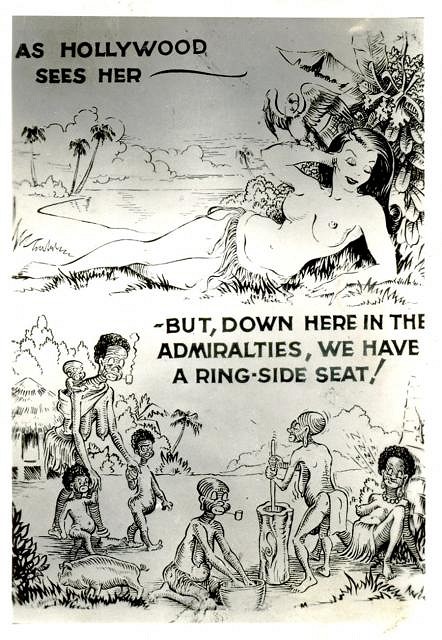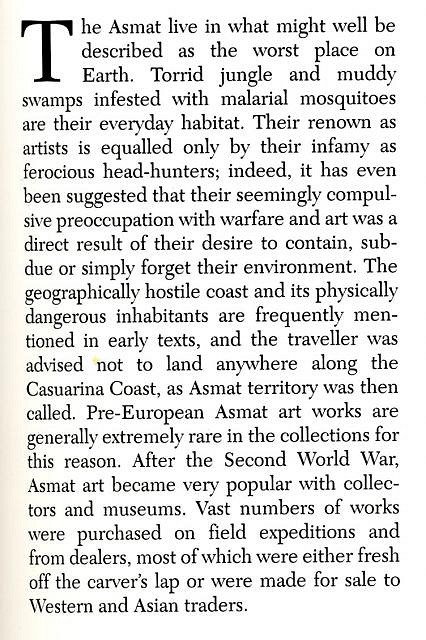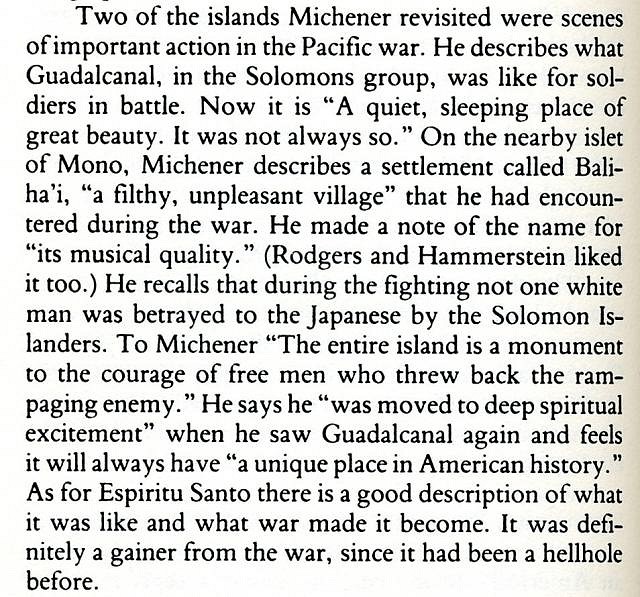Tiki Central / General Tiki / WWII - the New Guinea Campaign and images from the island
Post #511282 by bigbrotiki on Mon, Feb 15, 2010 3:39 PM
|
B
bigbrotiki
Posted
posted
on
Mon, Feb 15, 2010 3:39 PM
I believe the fact that Americans were seen as the rescuers from the evil Axis powers, and thus treated as heroes and friends, created a very positive memory in the G.I.s' minds of their wartime experience with other cultures. Also, war time experiences are often the strongest ever made by men, with their intensity remaining unmatched in civil life. But although I have featured two Tiki artists in my books who were stationed outside of paradisaical Polynesia, Barney West in the Marianas and William Westenhaver in the Admiralties, I think they were not necessarily typical, and I would like to caution your enthusiasm (which I am very fond of, Rick !) in assuming that Americans' war time experiences in MELA-nesia had that much influence on shaping Tiki style. Here are my two reasons: A.) The average G.I. did not have the artistic interest and eye to appreciate the artifacts. The influence of PNG art on Tiki style hails mostly from the primitive art appreciation by museums and art dealers that I describe in Tiki Modern. If the G.I.s had had the time (and mind) to experience the native culture at all, it was more in meeting the people themselves, and maybe dances and customs, I believe. Don't forget that your interest comes from an artistic sensibility not shared by the the average Joe. B.) Melanesia is not, and never was, the "Paradise on Earth" that Polynesia has been since it discovery. Hawaii with its Wahines was a very different ball game. The attractiveness jump from the exotic Eurasian look to the much less Caucasian Melanesians could not be expected of American mid-century men, as that telling B&W photo card I published in Tiki Modern so brutally relates:
And as you so aptly describe above, the ENVIRONMENT itself was not that "Beachcomber-in-a-hammock" island paradise one imagines of Hawaii and Tahiti, I quote this section from Anthony P. Meyer's "Oceanic Art" (which is in NO WAY to be taken as a negative comment on your stellar Asmat ART post, which I love !!!):
The story of the REAL Bali Hai perhaps best relates the impressions that many island locales actually made on G.I.s, and how they became romanticized by the media after the war. (The section below also speaks of what MATTERED to the fighting men back then, and I don't think native art was it):
Which is not to say that some guys might not have had the luck of finding little pockets of tropical bliss. But I believe the above description of "Hellhole" was generally more accurate for most of the places encountered by the men. AFTER the war, with the all-pervading influence of South Pacific the musical and movie, it was more remembered thru rose-colored glasses. But I don't think folks entered A-frame supper clubs with Asmat shields as decor on their walls because of what they experienced in the Melanesian war theater. |



